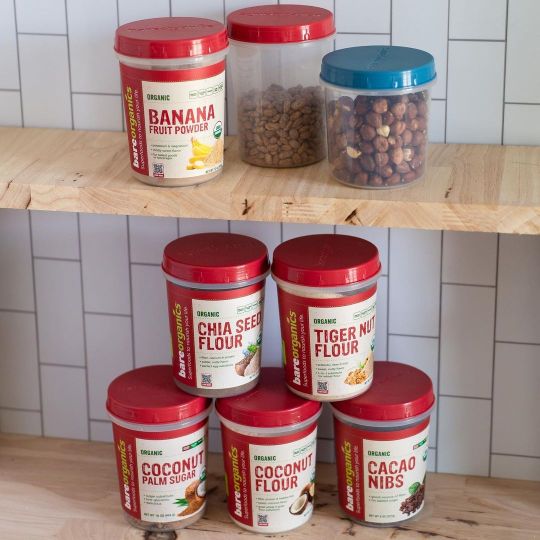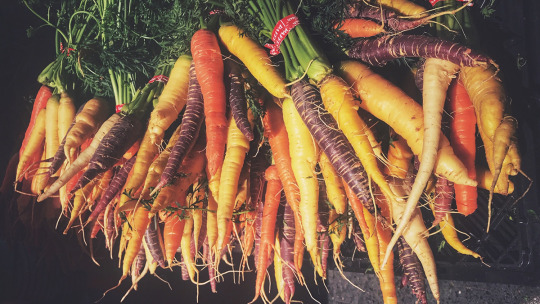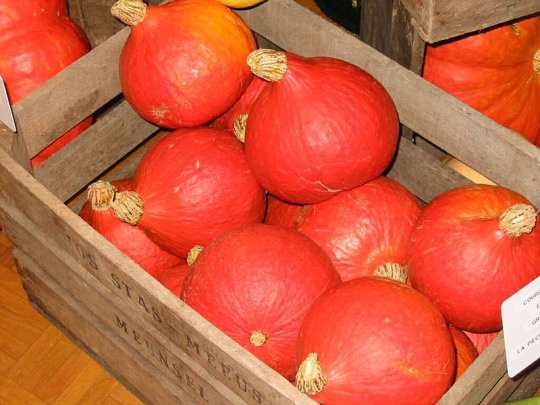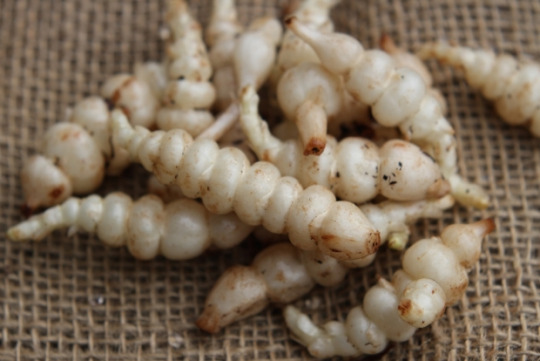#tigernut
Text
Farm fresh Tiger nuts 🐅

11 notes
·
View notes
Text
Tiger Nut Export From Nigeria

Tiger Nut Export From Nigeria
Tiger nut, a popular and nutrient-rich tuber in Nigeria, has become a thriving export commodity, bolstering the country's agricultural economy. Renowned for its health benefits and versatility, it has gained international recognition. Nigerian farmers are capitalizing on the growing global demand for tiger nuts, exporting them to various countries. The export market has not only provided a lucrative source of income for local farmers but has also contributed to the nation's foreign exchange earnings. As the demand for healthy and natural foods rises globally, Nigeria's tiger nut export industry stands as a promising success story in the agricultural sector.
What Are Tiger Nuts?
Tiger nuts in Nigeria are small, nutrient-packed tubers harvested from the Cyperus esculentus plant. Locally known as "aya" or "ofio," they are a traditional and essential part of Nigerian cuisine. Renowned for their sweet taste and chewy texture, tiger nuts are rich in fiber, providing numerous health benefits. In Nigeria, they are consumed as snacks, blended into refreshing drinks like "kunu aya," or used in traditional dishes. The country's tiger nut production has not only sustained local dietary practices but has also become a thriving export commodity, contributing to economic growth and providing livelihoods for farmers.
Important Information For International Buyers Who are Interested in Tiger Nut Export From Nigeria
International buyers interested in exporting tiger nuts from Nigeria should consider several important factors.
- First, ensure compliance with import regulations and standards of the destination country, including quality, packaging, and labeling requirements.
- Establish transparent communication with Nigerian suppliers to clarify terms, pricing, and delivery schedules.
- Due diligence on the reputation and reliability of potential suppliers is crucial.
- It's advisable to work with experienced exporters or engage trade agencies for smoother transactions.
- Additionally, understanding the seasonal variations in tiger nut production is essential for planning shipments.
- Being aware of currency exchange rates, payment methods, and any applicable taxes or duties will contribute to a successful and efficient export process.
Common Specifications For Tiger Nut Export From Nigeria
In Nigeria, common specifications for tiger nuts focus on quality, size, and cleanliness to meet international standards. Typically, specifications include:
- Size: Tiger nuts are often classified by size, with larger tubers generally considered more desirable. Sizes may range from small to extra-large, and buyers may specify their preference.
- Moisture Content: International buyers often require tiger nuts to have a specific moisture content, typically around 5-10%. Proper drying is crucial to prevent mold and ensure a longer shelf life.
- Foreign Materials: Buyers expect tiger nuts to be free from impurities, dirt, and other foreign materials. Thorough cleaning processes are employed to meet these standards.
- Packaging: Tiger nuts are usually packaged in sacks or bags, and packaging materials must meet hygiene and safety standards. Proper labeling with essential information, including product origin, is also important.
- Organic Certification: Some buyers may specifically seek tiger nuts with organic certification, indicating that the tubers are grown without synthetic pesticides or fertilizers.
- Shelf Life: Suppliers often provide information on the expected shelf life of their tiger nuts, helping buyers plan inventory and distribution.
- Purity: Buyers may request tiger nuts with a high percentage of pure tubers, ensuring a better quality product.
Understanding and adhering to these specifications is crucial for Nigerian exporters to meet the expectations of international buyers and maintain a positive reputation in the global market.
You can click here to see Gombella Export Specifications for Tiger Nut Export From Nigeria
Expected Shipping Documents For Tiger Nut Export From Nigeria
When it comes to Tiger Nut Export From Nigeria, this requires several essential shipping documents to facilitate a smooth international trade process. Common documents include:
- Commercial Invoice: This document details the transaction between the buyer and the seller, including the quantity, price, and terms of the tiger nuts. It serves as the basis for customs valuation.
- Packing List: This list provides a detailed breakdown of the contents of each package, specifying the type and quantity of tiger nuts. It helps in verifying the shipped goods.
- Certificate of Origin: This document certifies the origin of the tiger nuts, indicating that they were produced in Nigeria. It may be required for customs clearance and to benefit from trade agreements.
- Phytosanitary Certificate: Issued by the relevant agricultural authorities, this certificate confirms that the tiger nuts meet the phytosanitary standards of the destination country, ensuring they are free from pests and diseases.
- Quality Certificate: Some buyers may request a quality certificate, confirming that the tiger nuts meet specific quality standards and specifications.
- Bill of Lading: This document, issued by the shipping carrier, serves as a receipt for the goods and a contract of carriage. It includes details about the shipment, such as the quantity, weight, and destination.
- Insurance Certificate: If the shipment is insured, an insurance certificate provides details of the coverage, protecting against potential loss or damage during transit.
- Export Declaration Form: This form is often required by the exporting country's authorities and contains information about the exported goods, their destination, and other relevant details.
- Customs Documentation: Depending on the destination country, additional customs documents may be required, such as import permits or other specific clearance forms.
Ensuring that all these documents are accurately prepared and provided is crucial for a successful export process, helping to comply with international regulations and facilitating the smooth movement of tiger nuts across borders.
Guide On How To Deal With Tiger Nuts Export In Nigeria:
Tiger Nut Export From Nigeria involves several key steps to ensure a smooth and successful transaction. Here's a guide to help you navigate the process:
- Research and Identify Suppliers: Conduct thorough research to identify reputable tiger nut exporters in Nigeria. Look for companies with a track record of reliability and adherence to quality standards. Utilize online platforms, and trade directories, or engage with trade associations to find potential suppliers. Such as Tridge, go4worldbusiness, etc.
- Verify Credentials: Verify the credentials of potential exporters. Check for licenses, certifications, and compliance with export regulations. Ensure the supplier follows ethical and sustainable practices.
- Communicate and Request Information: Contact selected exporters and communicate your interest in purchasing tiger nuts. Request detailed information about their products, including specifications, pricing, and terms of sale.
- Quality Standards: Inquire about the quality standards followed by the exporter. Ensure that the tiger nuts meet international quality requirements, and request relevant documentation, such as certificates of origin and phytosanitary certificates.
- Sample Evaluation: Request samples of the tiger nuts before making a bulk purchase. Evaluate the quality, size, and taste to ensure they meet your expectations. Pay attention to packaging and overall presentation.
- Negotiate Terms and Conditions: Discuss and negotiate terms and conditions with the exporter. This includes pricing, payment terms, delivery schedules, and any other specific requirements you may have.
- Contracts and Agreements: Formalize the agreement by drafting a contract or purchase agreement. Clearly outline the terms, conditions, and specifications of the transaction. Ensure that both parties understand and agree to the terms before proceeding.
- Payment: Agree on a secure and mutually acceptable payment method. Use established payment channels and consider using mechanisms like letters of credit to provide security for both buyer and seller.
- Shipping and Logistics: Coordinate shipping and logistics with the exporter. Ensure that all necessary shipping documents, including the commercial invoice, packing list, and certificates, are prepared and provided in accordance with international trade regulations.
- Inspection and Receipt: Arrange for inspection upon receipt of the tiger nuts. Ensure that the delivered goods match the agreed-upon specifications and meet quality standards.
By following these steps and maintaining clear communication with the tiger nut exporter, you can enhance the likelihood of a successful and satisfactory transaction. Always prioritize due diligence and ensure compliance with international trade regulations throughout the purchasing process.
Why Should You Do Business with Gombella Integrated Services Limited-Tiger Nut Export From Nigeria
Gombella Integrated Services Limited emerges as a compelling choice for engaging in the tiger nut export from Nigeria, standing out for its commitment to excellence, adherence to quality standards, and a proven track record in the agro-export sector. This Nigerian-based company specializes in the export of tiger nuts, offering a range of premium products that meet international specifications.
Here's why considering Gombella Integrated Services Limited for your tiger nut procurement is a strategic business move:
- Quality Assurance: Gombella prioritizes quality, ensuring that its tiger nuts meet and often exceed international standards. The company is dedicated to providing a premium product, free from impurities, and compliant with phytosanitary requirements.
- Reputation and Reliability: With a commendable reputation in the agro-export industry, Gombella has established itself as a reliable partner for international buyers. Their consistent delivery of high-quality products has earned them trust and positive reviews within the business community.
- Transparency and Communication: Gombella values transparent communication throughout the business process. From providing detailed product information to offering clear terms of sale, the company ensures that clients are well-informed and confident in their decision to partner.
- Experience and Expertise: Benefit from Gombella's extensive experience and expertise in the agro-export sector. The company's seasoned professionals understand the intricacies of the industry, enabling them to navigate challenges and deliver seamless transactions.
- Customization and Flexibility: Gombella recognizes the unique needs of each client and offers flexibility in terms of product specifications, packaging, and shipping arrangements. This adaptability allows them to cater to a diverse range of customer requirements.
- Compliance and Documentation: Gombella is committed to compliance with export regulations and provides accurate and complete documentation, including certificates of origin, phytosanitary certificates, and other essential paperwork. This commitment ensures a smooth customs clearance process for the buyer.
- Sustainability Practices: Gombella Integrated Services Limited emphasizes sustainable and ethical agricultural practices. By choosing Gombella, buyers align themselves with a company that values environmental responsibility and community development.
In conclusion, Gombella Integrated Services Limited emerges as a trusted and strategic partner for those seeking to venture into tiger nut procurement and export. The company's unwavering commitment to quality, transparency, and customer satisfaction positions it as a reliable choice in the competitive landscape of agro-export businesses.
Read the full article
0 notes
Photo

Looking for a healthy substitution or need an alternative ingredient? Whether it’s vegan, gluten-free, low-calorie or low-fat, we have something for you! ♻️ Reusable Jars Only BareOrganics has reusable jars! We have designed our powder containers to be very sturdy and conveniently reusable with an easy-peel label! Single-use plastics dominate the marketplace. Think plastic grocery bags, non-resealable product containers, water bottles, and other products that come in non-recyclable bags or hard-to-recycle plastics. Recycling can help divert this waste, but it’s not the only solution to minimize the globe’s increasing plastic waste problem. That's why we designed Super Sturdy REUSABLE Jars! #bareorganicssuperfoods #baking #bake #glutenfree #superfoods #flour #chia #tigernut #cacao #cacaonibs (at San Diego, California) https://www.instagram.com/p/CkwEilOPlcp/?igshid=NGJjMDIxMWI=
0 notes
Photo

An afternoon developing a couple of recipes with tiger nut flour. The idea was to take advantage of the naturally occurring sweetness of the tiger nut and not use any kind of additional sugar or sweetener. Also used rice flour and tocos for natural their sweetness. Both the cocoa muffins and the golden milk spice cookies are gluten, sugar/sweetener, and dairy free. I used an egg in the muffins but I reckon they can also work without it. They’re both delicious dipped in cold almond milk . . . #sugarfree #dairyfree #glutenfree #recipedevelopement #teatime #snacktime #workingwithrestrictions #foodphotography #tigernut #chufa #baking https://www.instagram.com/p/CidB3p6Mj-E/?igshid=NGJjMDIxMWI=
#sugarfree#dairyfree#glutenfree#recipedevelopement#teatime#snacktime#workingwithrestrictions#foodphotography#tigernut#chufa#baking
0 notes
Photo

Paleo Copycat Dunkaroos
#paleo#grain free#gluten free#dunkaroos#copycat#dip#cookies#sprinkles#recipe#kids#dairy free#nuts#nut butter#aip friendly#aip#tapioca starch#tapioca#tigernut flour#unboundwellness
186 notes
·
View notes
Text

GF/V Kit Kat Bars (via Bake it Paleo)
#gluten free#gf food#dairy free#gluten free foods#vegan#egg free#dessert#snacks#candy#chocolate#almond flour#grain free#nut free option#tigernut flour#peanut butter#bakeitpaleo
21 notes
·
View notes
Text

Vegan Mozzarella Sticks
#vegan#veganized#appetizer#snacks#mozzarella sticks#vegan mozzarella#cashews#macadamia milk#tapioca starch#thyme#nutritional yeast#apple cider vinegar#coconut oil#tigernut flour#basil#rosemary#garlic powder#onion powder#agar agar#chickpea flour#black pepper#sea salt
21 notes
·
View notes
Text
10 Amazing Health Benefits of Tigernut Flour + Recipes and Substitutes
Tigernut flour is a gluten-free, nutrient-rich flour made from tigernuts, which are small, round tubers that are also known as chufa nuts or earth almonds. Tigernut flour has a slightly sweet, nutty flavor and can be used in a variety of recipes, including nutritious drinks, baked goods, smoothies, and soups. A clinical investigation of Tigernuts shows the presence of Potassium, Phosphorus,…

View On WordPress
0 notes
Text
Tiger Nuts
Our tiger nut liquid and milled tiger nut, are the perfect partners for our Cream-X Big Carp Groundbait. A good mix-up together of the three in a PVA bag with some Catalyst pellets and wafter.. Lush…😀

View On WordPress
1 note
·
View note
Text
Tiger Nuts
Our tiger nut liquid and milled tiger nut, are the perfect partners for our Cream-X Big Carp Groundbait. A good mix-up together of the three in a PVA bag with some Catalyst pellets and wafter.. Lush…😀

View On WordPress
0 notes
Text
This muffin recipe is jam-packed with nutritional values, health benefits, and weight loss advantages. This is a gluten-free, dairy-free, and sugar-free recipe.
#fibre#FibreRich#fibrediet#guthealth#fibreintake#moderndiet#diet#healthydiet#sourcesoffibre#Wholegrains#constipation#westerndiet#lowercholesterol#lowerglucose#cholesterol#glucose#fibrerich#chiaseeds#tigernuts#bestdiet#plantbasedeating#veganfood#coconutflour#bananaflour#healthysnacks#highfibrefoods#bananamuffin#brisbanenaturopath#naturopath#muffin recipe
0 notes
Text
HOW TO MAKE TIGER NUT JUICE AT HOME, STEP BY STEP.
HOW TO MAKE TIGER NUT JUICE AT HOME, STEP BY STEP.
HOW TO MAKE KUNU AYA (TIGER NUT DRINK)
What Is Tiger nut?
They’re the size of a chickpea but wrinkly with a chewy texture and sweet nutty flavor similar to coconut.
Tiger nuts were one of the first plants cultivated in Egypt and traditionally used as both food and medicine.
They’re rich in a variety of nutrients and have been linked to several health benefits — ranging from better digestion to a…

View On WordPress
0 notes
Text
BAKING MIX FOR GLUTEN-FREE FUDGE BROWNIES
The greatest brownies you've ever had will be made using Iya's fudge brownie baking mix. You'll want to eat these fudge brownies right out of the pan because they are so delicious and gooey! Contains cassava flour, pure West African cocoa, and a smattering of baking spices. This mixture is free of preservatives, additives, artificial colors, and gluten and is non-GMO, kosher, and certified gluten-free.
More love, more chocolate, and excellent flavor. It's incredibly simple to utilize Iya's mix just combine the milk, eggs, and oil. Next, combine, bake, and relish. Since West Africa produces more than two-thirds of the world's cocoa, we collaborate closely with our partners to make sure the African farmers who cultivate our cocoa are paid fairly and on time.
#gluten free flour blend#cassava powder#what iscassava#tapioca gluten free#tigernut flour#gluten free all purpose flour#organic brown rice flour
0 notes
Photo

#Fartons are a traditional confectionery from #Valencia #Spain. They are usually enjoyed by dipping in #horchata (orxata), a drink made of #tigernuts. (at Horchata Subies) https://www.instagram.com/p/CeHySN3NnyJ/?igshid=NGJjMDIxMWI=
0 notes
Text
Try to learn about the old foods

I have most recently started to meal prep, with making a lot of foods and putting them in the freezer. This ended up allowing me to buy the foods in bulk from the local market. And, well... This allowed me to eat some of the foods that the supermarket does not have.
We do have a bit of a problem. And that problem mostly is that we got our food kinda messed up. Because people have lost the connection to the food they eat. But also because of colonialism.
The big thing that happened is, that we lost contact with most local foods. No matter where I go in the "first world nations"... The foods offered to me in the supermarkets are the same - and they also look the same.
This means that a lot of people have no real idea, what foods came from where in the world - but also do not know half of the foods that originated with where they are from, because they are not easily available.

Tomatoes are an example. Not only did historical tomatoes look and taste very differently from the tomatoes we eat today, but obviously... they came from the Americas. So they are not a food that originated with Europe and was not widely available in Europe until the 1600s. While, yes, the first tomates came here more than a hundred years earlier... it took a while for them to catch on.

This is parsnip. Another root vegetable that was commonly eaten in Europe for most of history. It has a more intensive taste than the usual carrot - but is also not that different from it, when it comes to consistency and how it is going to cook.

This is fennel. You might know fennel seeds as a spice or something you might drink as a tea. But the rest of the plant is edible, too, and a surprisingly strong flavored vegetable. It also is very crunchy and makes a really great addition to salads. But it is often not really sold in many places.

This is the Jerusalem Artichoke, another vegetable that originates within the Americas. To be exact, this is the root of a kind of sunflower. It got its name for being very similar in taste and tecture to the Artichoke. I honestly do not know, though, why it is called "Jerusalem Artichoke", because it does not have anything to do with Jerusalem.

The Potimarron is a kind of squash that - like basically all other forms of squash - originates in the Americas as well. It has a very nutty flavor. In Europe it was very popular in France for a long while, hence the french name. It has tons of meat and really makes for great stews!

This is a rutabaga, which originates from somewhere in northern Europe. We do not really know from where. All we know is, that it was a Swedish botanist who cultivates the form we still eat to this day in the 1620s. Which is why it is also called the "Swedish turnip". It does taste like a more bitter carrot, but makes really good addition to stews or can be served stamped.

This is the Chinese Artichoke and another root vegetable, that as the name suggest originates from China. It was cultivates in China in the late medieval period and has later made its way to Europe, especially France. It has a really sweet and nutty taste and can be eaten raw or in salads. Though there are dishes mashing the vegetable, too.

These are tigernuts, a vegetable that has been around forever. It originates in southern Europe, southern Asia and northern Africa. It is a dried fruit, with a sweet and earthy taste and it is known a lot in Spanish cuisine, but also in the cuisine of southern Asia.

Yacon is a root vegetable that originates with Peru, where it is still eaten, while the rest of the world mostly forgot about it. Well, except Japan, where it is currently getting more and more popular. It is a vegetable, but it has a very fruity taste.
I could now go on and name more vegetables from all around the world that were once grown and fed people, but got forgotten more and more in favor of the very limited diet made up of potatoes, corn, potatoes, peppers, cucumber, onion and tomatoes, that is basically what you will get to eat in most places.
And... Well, the thing about it is that... It is not really a good thing that we grow the same stuff everywhere. It is not good for us and it is not good for the environment. It is not good for those foods, either.
I really wish people would try and eat more of the stuff that originates with their region. And that they would eat the not-so-perfect looking foods as well. Because it is gonna be more sustainable in the end.
#solarpunk#food#vegetables#fruits#farming#agriculture#history#food history#sustainable living#sustainability#colonialism
325 notes
·
View notes
Text
youtube
Nigerian Aphrodisiac: Tigernuts, Coconut & Dates | Flo Chinyere
9 notes
·
View notes